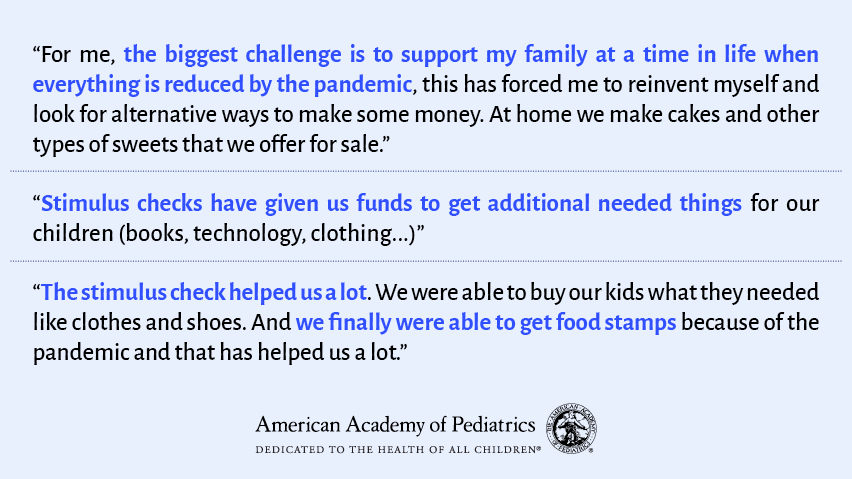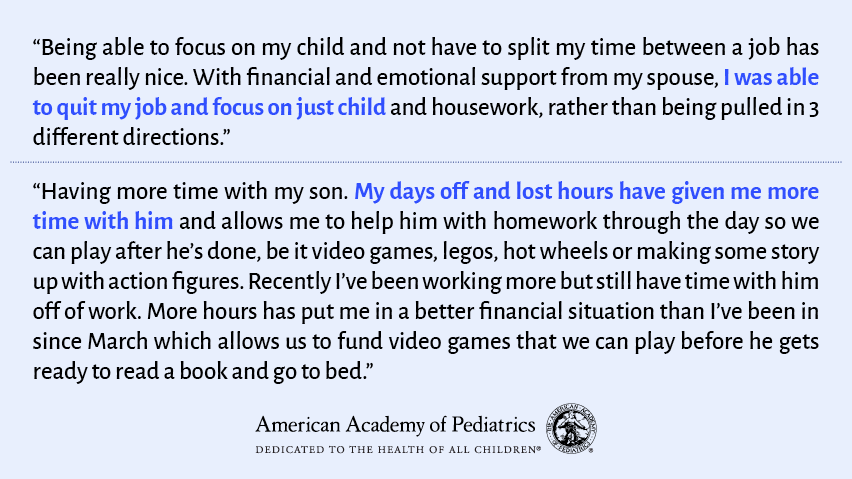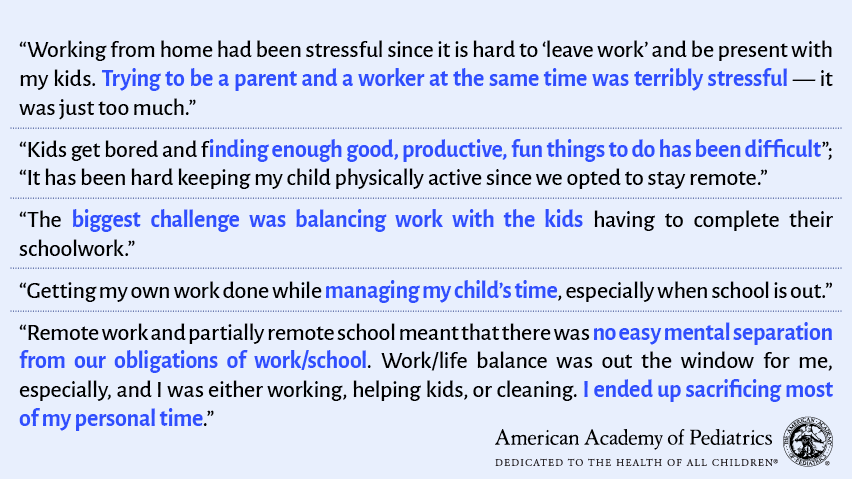While caregivers and families have faced immeasurable challenges since the start of the COVID-19 pandemic in March 2020, they have also displayed their true strength. Previous Family Snapshots have discussed that while the pandemic added much stress and adversity on some families, many parents reported feeling close to their children despite economic challenges, work or employment changes, and transitions to remote learning.
In this two-part narrative report, we summarize the statements from a sample of 250 parents and caregivers, randomly selected from nine-thousand survey respondents when asked about the challenges and things that helped during the pandemic. By noting common themes across parent responses, these reports aim to shed light on how some families described their experience with the disruptions.
Economic Changes and Supports
Throughout the COVID-19 pandemic, many parents encountered changes in their employment and family finances. Families reported facing new challenges, including job loss and reduced working hours. Many caregivers struggled to support their children and households due to income loss.

In the wake of this financial stress, some families found new ways to support themselves, demonstrating resilience. Some caregivers enduring financial hardship noted how government assistance programs improved their circumstances. Accessing new support systems made available during the pandemic helped parents provide for their children.

For some families, reducing or changing work hours provided opportunities for positive family experiences.

Resources families accessed often helped to diminish financial stress for caregivers, but many noted that the support was insufficient and they still faced significant financial stress. Parents often referred to using a patchwork of support from various services to make ends meet. Those relying on temporary support programs often struggled when assistance was lost.

Working and Caring from Home
Due to the pandemic, many parents encountered disruptions to their employment status which affected caring for children. Those caregivers who transitioned to working remotely often reported changes in household routines, and some had trouble balancing work and home responsibilities. Families felt the challenge of parenting, working, and providing educational support all at once, while also attempting to find safe activities for their children. Specifically, parents worried about incorporating school schedules and helping children with online learning while working themselves. Some also mentioned the lack of free time they experienced while caregiving alongside working from home, contributing to stress for the parent and family.

Still, others reported benefits of remote work, as it allowed them to spend more time with their families and provide increased care. Lack of commuting time and daily interaction with children presented a positive opportunity for many parents, and helped them navigate the various stages of the pandemic. Some mentioned being able to take on more household responsibilities regularly, such as preparing meals or reading to their children. For other families, the transition to one parent working remotely was beneficial to the household at large, as it allowed for more time spent together. Though the change in household routines that was presented by remote work was a challenge to some families, it also highlighted ways in which parents grew more involved with their children’s lives. For some, this included helping children with remote learning while working from home.

As covered in a previous report, higher economic distress can contribute to higher psychological distress in parents and can disrupt parent-child relationship growth. In supporting children, it is critical to note how lack of economic stability can affect childhood experiences, and therefore efforts to continue financial supports for families is crucial.
In part two of this qualitative report, we will explore how parents handled disruptions to children’s education, and the contribution that remote learning made to increased caregiving responsibilities. We will also discuss caregivers’ comments on how COVID-19 lockdowns affected time at home for their families.
Last Updated
02/01/2022
Source
American Academy of Pediatrics